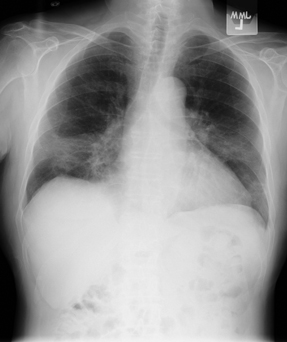Information plus documentation a must for informed consent
Documentation of informed consent is an important deterrent to malpractice and negligence claims. One physician describes how his informed consent process was the deciding factor in a missed case of prostate cancer, and outlines how any physician can accomplish it.
“Informed consent saved my bacon,” urologist James E. Gottesman, MD, told attendees at the Medical Group Management Association's 2011 annual meeting, held in Las Vegas in October.
In 1990, Dr. Gottesman was sued for late diagnosis of a patient's prostate cancer. He won the case, and one of the jurors told him that the deciding factor had been informed consent documentation showing that the patient had been warned that a biopsy could miss cancer.

“Documentation deflected my negligence case. Documented informed consent is really, really, really important,” said Dr. Gottesman, who currently practices at The Vasectomy Center-Eastside in Issaquah, Wash.
Every procedure, every time
Dr. Gottesman has been a believer in thorough informed consent since residency, when he got his first computer and used it to create templates for consent documentation. “For the past 25 years, literally everything I did had a consent form that documented what I discussed with the patient,” Dr. Gottesman said. His template includes a different form for every procedure that lists, in plain language, all of the risks that would be covered in an informed consent conversation.
Good informed consent should be a concern for not only specialists but any physician who performs a procedure with risks, he said. “If you're sticking a needle in somebody draining a joint, could they bleed? Might you not make the right diagnosis? Even with a Pap smear, it can't hurt,” said Dr. Gottesman.
Although he thinks all medical practices should be using something similar to his templates, many aren't, he said. Some physicians may believe incorrectly that the hospital is taking care of the issue. “If you read a consent form at the hospital, the first thing it says is your doctor has given you informed consent. The hospital's consent form is doing nothing but relieving them of having to give consent,” Dr. Gottesman said.
Or doctors use a totally blank form. “Almost all consent forms are generic for all procedures and then somebody is supposed to fill in the blanks,” he said.
Often the person who fills in the blanks isn't the physician, and the completed forms are no more helpful to patients than the blank one, he said. Dr. Gottesman showed examples of consent forms with a scribbled acronym in the procedure blank and “none” written in the blank for alternatives to the procedure.
Physicians may have thought they were doing the right thing, liability-wise, by keeping these notes brief, according to Dr. Gottesman. “Lawyers have told me, ‘Be very vague. If you start to be specific, then anything you don't put in, it implies you didn't talk about it. All you should write is informed consent has been given,’” he said.
“The problem is we've been told that forever and yet it hasn't worked,” he added. Based on his experience, and situations he's witnessed involving other physicians, Dr. Gottesman believes standardized informed consent forms are a better solution.
The Veterans Administration has a library of consent forms, as do some hospital systems, although he noted that hospitals and practices that have not invested in automated tools are limited in what they offer. “An awful lot of practices and some hospitals, they've got great consents for the procedures we do constantly. The procedures that are done rarely don't have consents at all,” Dr. Gottesman said.
Electronic health records (EHRs) seem like a natural answer to the need for standardized forms, but so far they haven't included them. “The bad news is that not one EHR provider has addressed or adopted consent forms. They don't want to touch it because it's litigious,” he said.
Until standardized, specific forms are available on a widespread basis, Dr. Gottesman recommends that physicians create them themselves. “You know the risks for every procedure. List them,” he said. (A product designed by Dr. Gottesman, called iMedConsent, can be used to produce procedure-specific consent forms. It's sold by DialogMedical. Dr. Gottesman disclosed that he has no financial interest in the company beyond consulting and reviewing forms.)
Patient communication
Dr. Gottesman also offered some advice on discussing consent with patients. “It isn't just a piece of paper. It's a process, a process of sitting down with the patient and family,” he said. Having at least one member of the patient's family present for the discussion is important because he or she may be more able to focus on the content. “Sometimes the patients are off in another world,” Dr. Gottesman said.
If the patient has any particular impediments to understanding, it's even more crucial to have a second listener, he added. “If they can't speak English very well, or if you don't think they're very smart, bring in somebody else from the family.”
Many communication experts recommend the teachback method of explanation, in which patients repeat back what they've understood from the conversation, but Dr. Gottesman doesn't always find that to be necessary. “As a physician, you've got a pretty good idea when somebody's understanding,” he said.
A technique that he's found successful is telling patients at the start of the conversation that you're going to ask them questions at the end, in order to increase the likelihood that they'll pay attention. “You don't have to ask the questions. Just telling them that is enough,” Dr. Gottesman said.
For serious procedures, it's also important to schedule this conversation far enough ahead that the patient has an actual choice. “It's very difficult to think about what else you might do if you're signing on the morning of the procedure,” he said. Anyone who's uncertain should be given an opportunity to think it over. “If I had a person who would hem and haw, I gave them the consent form to take home,” Dr. Gottesman added.
The result of this process should be well-informed patients and fewer malpractice judgments, he concluded. Dr. Gottesman noted that apologies for adverse events have become popular, but he suggested that warning patients about negative outcomes before they happen can reduce patient unhappiness and lawsuits even more effectively.
“I do agree with apology and taking responsibility but ... proactive disclosure is ... a lot better,” he said.




